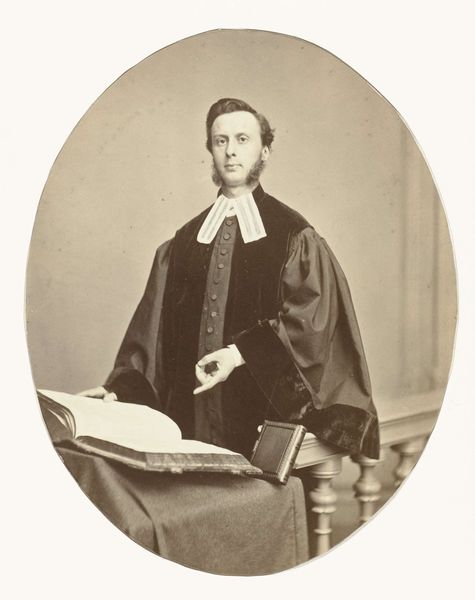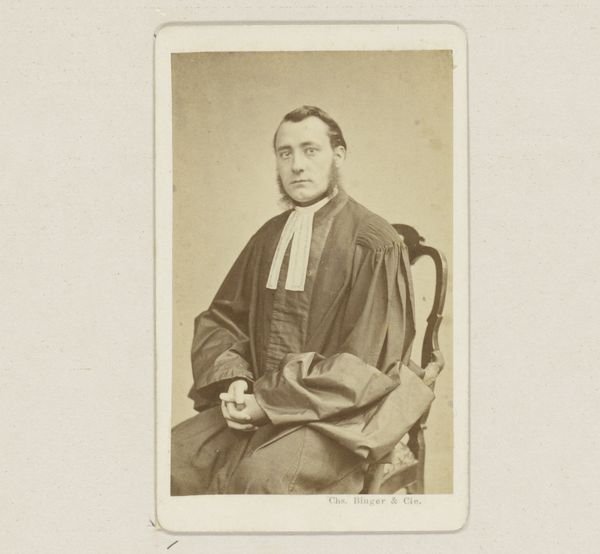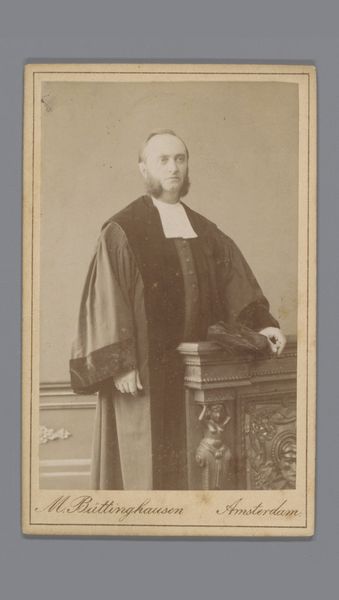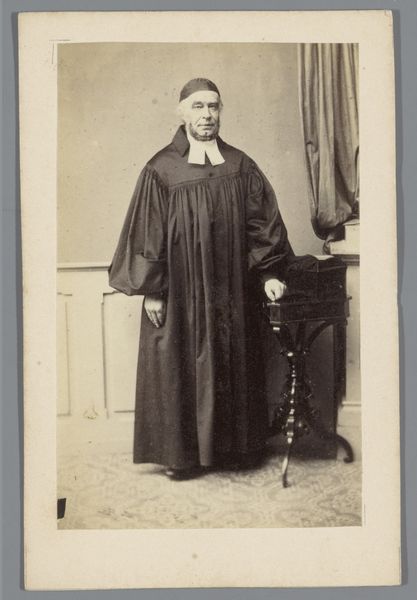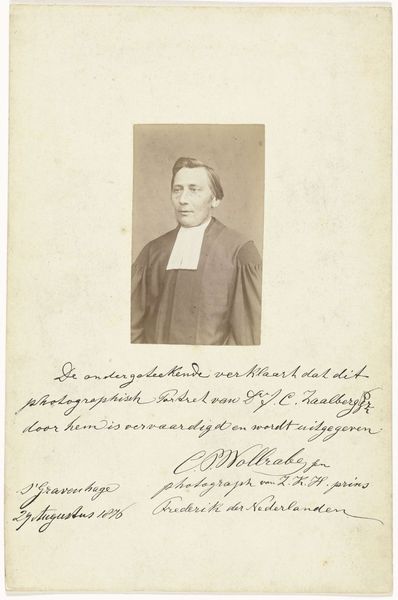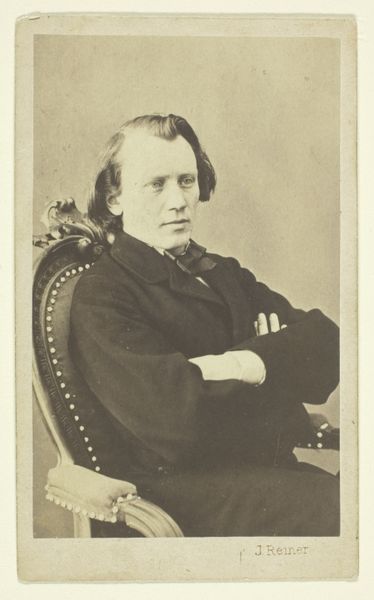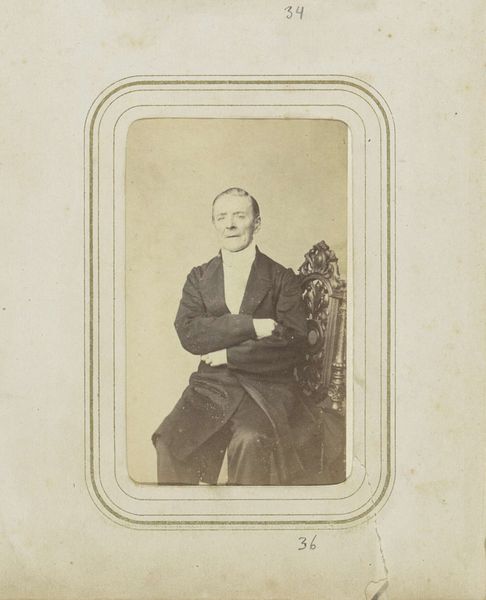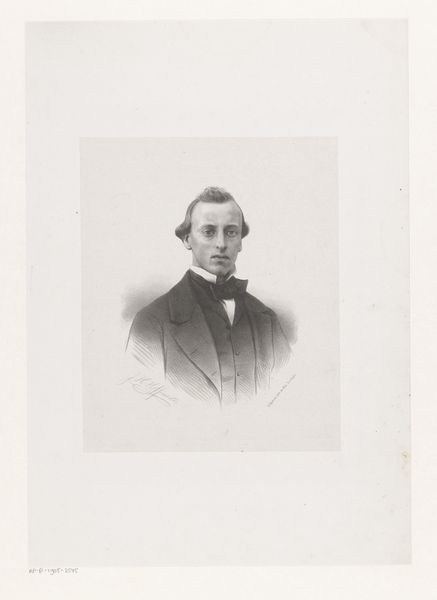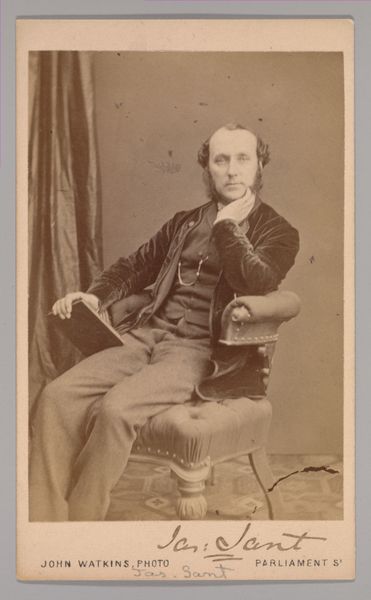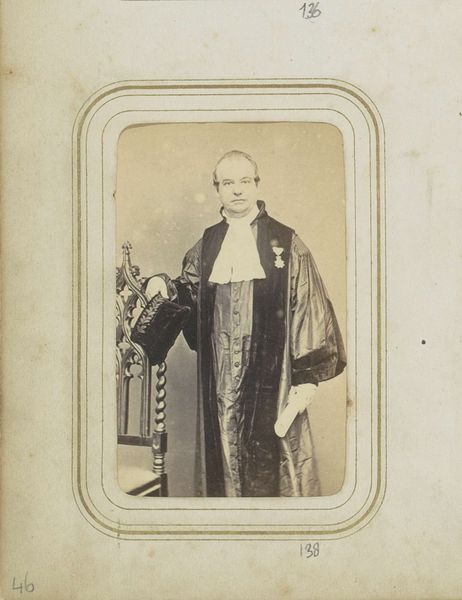
Portret van de Nederlands-Hervormde predikant Auguste Chrétien Joseph van Maasdijk (1842-1916) 1870 - 1880
0:00
0:00
photography, gelatin-silver-print
#
portrait
#
archive photography
#
photography
#
historical photography
#
gelatin-silver-print
#
genre-painting
#
realism
Dimensions: height 87 mm, width 55 mm
Copyright: Rijks Museum: Open Domain
Editor: So, here we have a gelatin-silver print from sometime between 1870 and 1880, titled "Portrait of the Dutch Reformed Minister Auguste Chrétien Joseph van Maasdijk." There's a stillness to it. I find it so formal. What’s striking to you about this photograph? Curator: Well, what's interesting is how these portraits circulated, often as cartes de visite. This one offers a fascinating insight into the visual construction of authority in the late 19th century. The sitter, a minister, is meticulously staged, even down to the book and the pointing finger. This controlled presentation begs the question: what kind of message was he trying to project to his congregation and the wider world? What kind of role do you think this plays into the socio-cultural dynamic? Editor: I hadn’t thought about it in terms of constructed authority! So, it's not just a neutral image; it's making a statement. Was this kind of staging common for ministerial portraits at the time? Curator: Absolutely. It's less about capturing an individual's likeness and more about reinforcing a specific role within society. The dark robe, the stark white collar, and the setting with the ornate chair… They all contribute to the desired image of piety, intellect, and authority. Consider how portraiture has historically functioned – what kind of societal influence could be interpreted here? Editor: Thinking about it that way, the photograph becomes a historical document. It reveals so much more than just the minister's face! I suppose it reflects on the power dynamics inherent in the church at the time, as well as the public persona expected of its leaders. Curator: Precisely! It provides insight into the performance of identity and how that relates to institutional power, making us reconsider the role and representation of religious leaders in the public sphere of the 19th century. Editor: I'll definitely be thinking about portraits differently now – more as cultural artifacts!
Comments
No comments
Be the first to comment and join the conversation on the ultimate creative platform.
